Idrija – Not enough lunch, too much museum and a brave girl
25. August 2025
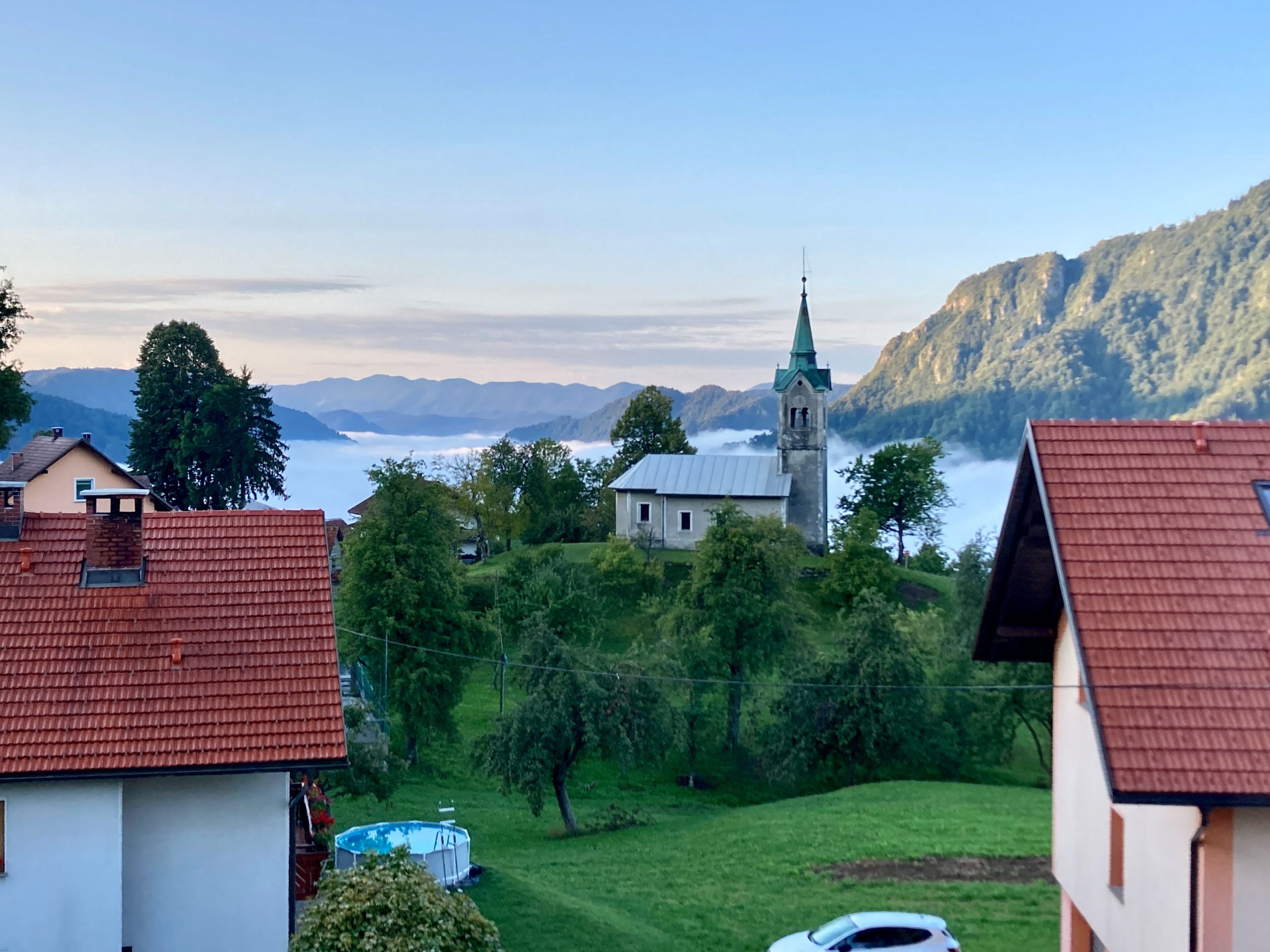
In the morning, we learned about the unique location of the place: we were above the clouds! And for quite a while, too. And the following morning as well. That’s really great!
We still wanted to head down into the valley, though, and had picked the small town of Idrija as our destination for the day. Idrija was mentioned in the guidebook, but it didn’t seem to be considered one of Slovenia’s major attractions. All the better – we also wanted to get a feel for what really makes “Slovenia” special. The area was already a good start for that. Once again, we drove along many very winding, narrow, and rather rough roads, passed small clusters of houses, and saw very few people. It was quite pleasant that we hardly encountered any cars either – the roads were narrow, the slopes steep, and a moment of inattention could easily have sent us tumbling down..
What struck us was the good condition of the houses. They were fairly large and well built. But a few questions remained: How do people here earn their living? What is it like to live in such solitude? Where and how do the children go to school? And what do people do all day?
So we arrived in Idrija. There was little traffic, free parking, a few larger companies on the outskirts, and a compact little town center.
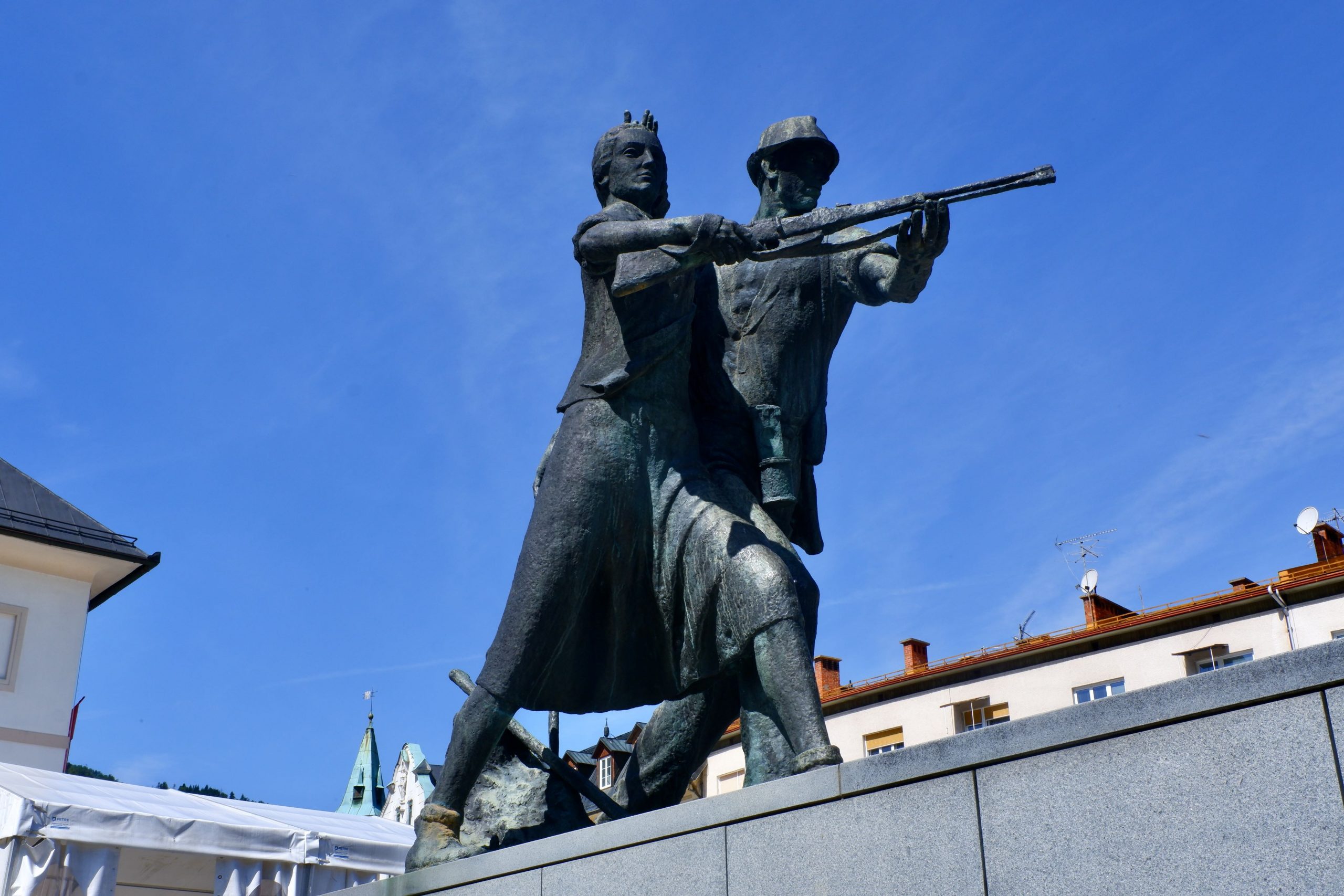 monument
monument
Idrija is a town rich in history. There is a monument here that symbolizes the partisan movement against the fascist occupation during World War II. Both men and women were actively involved. But before we really delved into the history, we first wanted to have lunch – and that turned out to be a problem! There wasn’t a single open restaurant. That is, none where you could order good dishes, preferably even regional or Slovenian specialties. Any place that might have worked was closed. Whether just for today or permanently, we couldn’t tell. We wandered around in vain and ended up in a café offering a few frozen pizzas. Well…
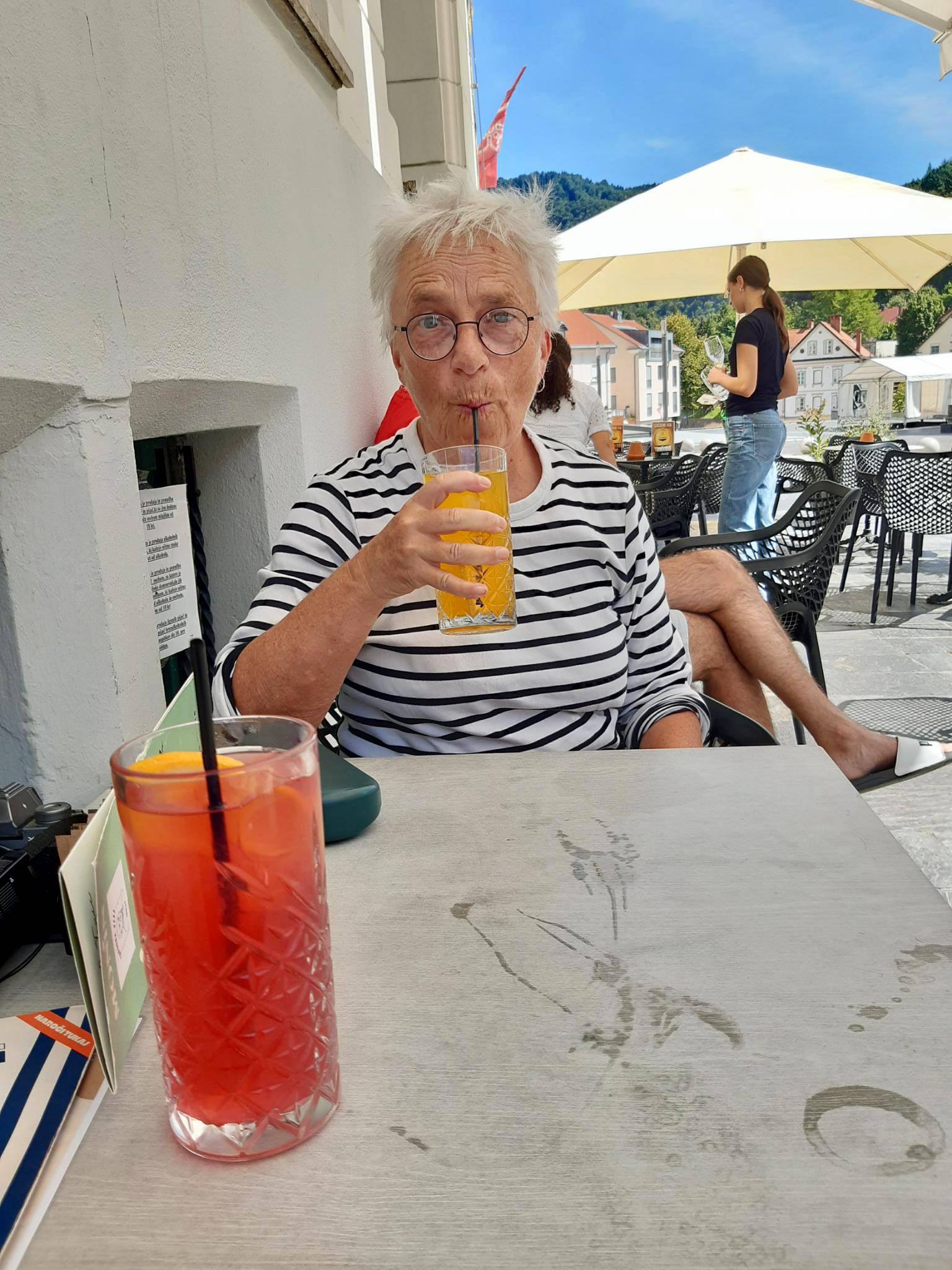 before the Pizza
before the Pizza
Idrija, however, was known not only for the anti-fascist resistance but primarily for its mercury. Mercury was first discovered here in 1493, and the mines that were built then extracted huge quantities of this precious metal. For 500 years, it was the second-largest mercury mine in the world! An incredible 700 km of tunnels crisscross the area. Up to 1,300 people were needed to work there. Slovenia, or at least this region, was under the Habsburg monarchy, which was very interested in the mining operations. Many people with scientific and economic expertise came here, and a lot of the historical records from that time are in German.
Of course, mercury is toxic, and the workers had to contend with related illnesses. There was also an early psychiatric hospital here. But people needed the money, and they often tried to supplement their meager wages through smuggling. To prevent this, the miners’ “work clothing” notably had no pockets!
A lot of wood was needed to support the mine tunnels and to fuel the furnaces. People also needed wood for heating and cooking. As a result, the area was quickly deforested and faced many problems. Today, however, you can hardly see any of that. Instead, you can visit a preserved and restored workers’ house. On the ground floor, animals lived; above that, a family with slightly better means; and the higher up you went, the simpler the living conditions. Around the house, there were vegetable gardens. The people had moved from the countryside and were unfamiliar with city life. As a precaution, they even brought their pigs and cows with them.
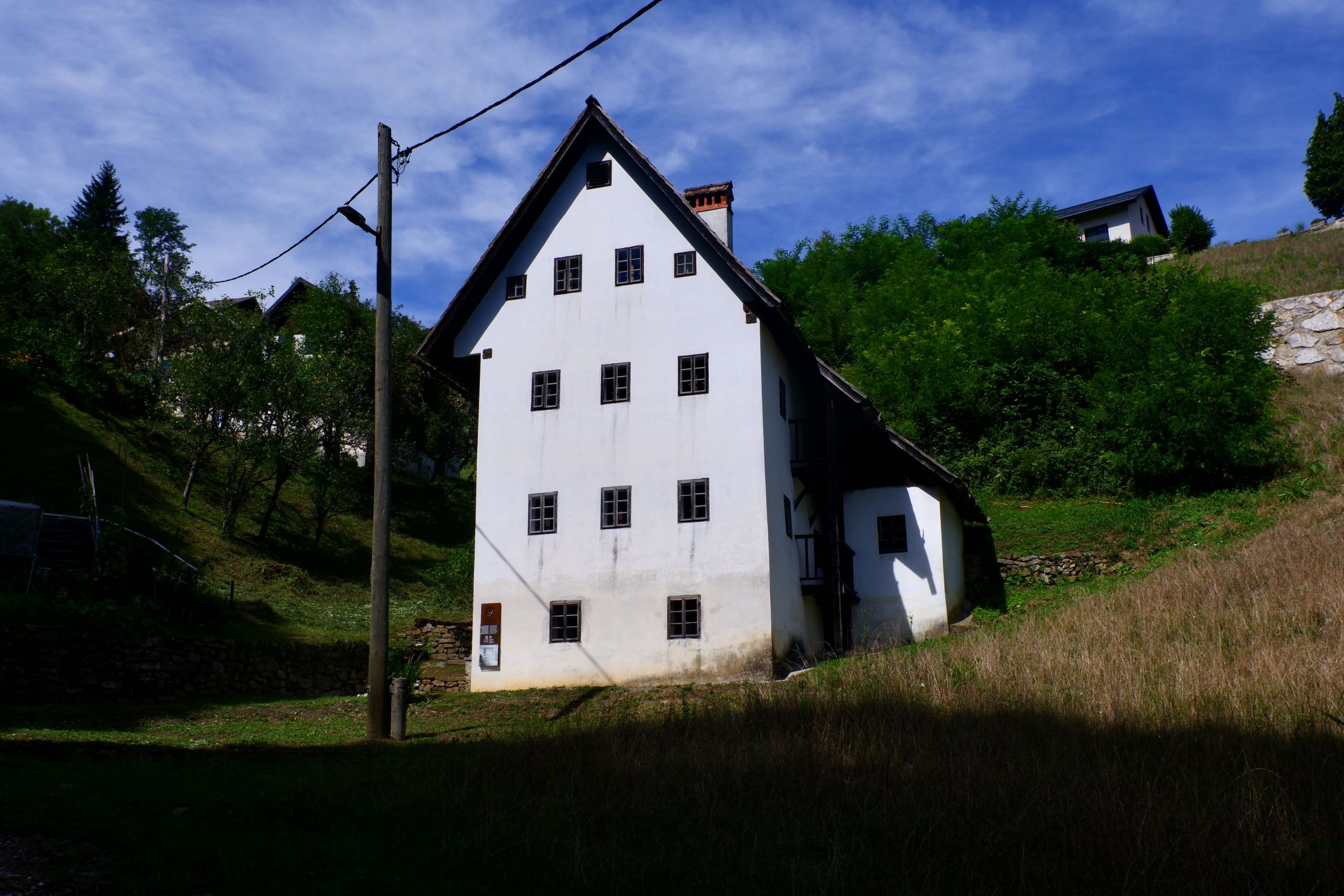 1
1
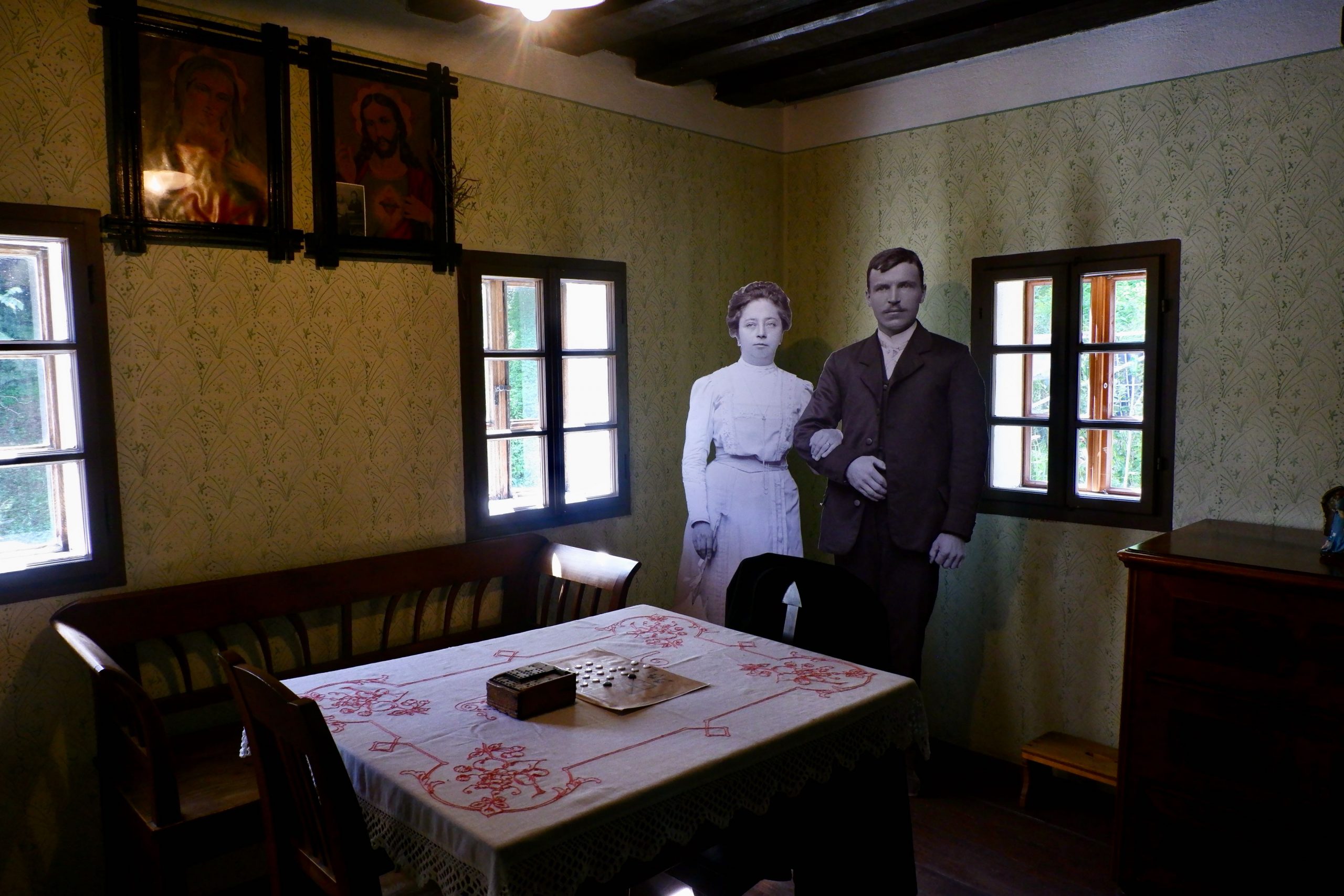 2
2
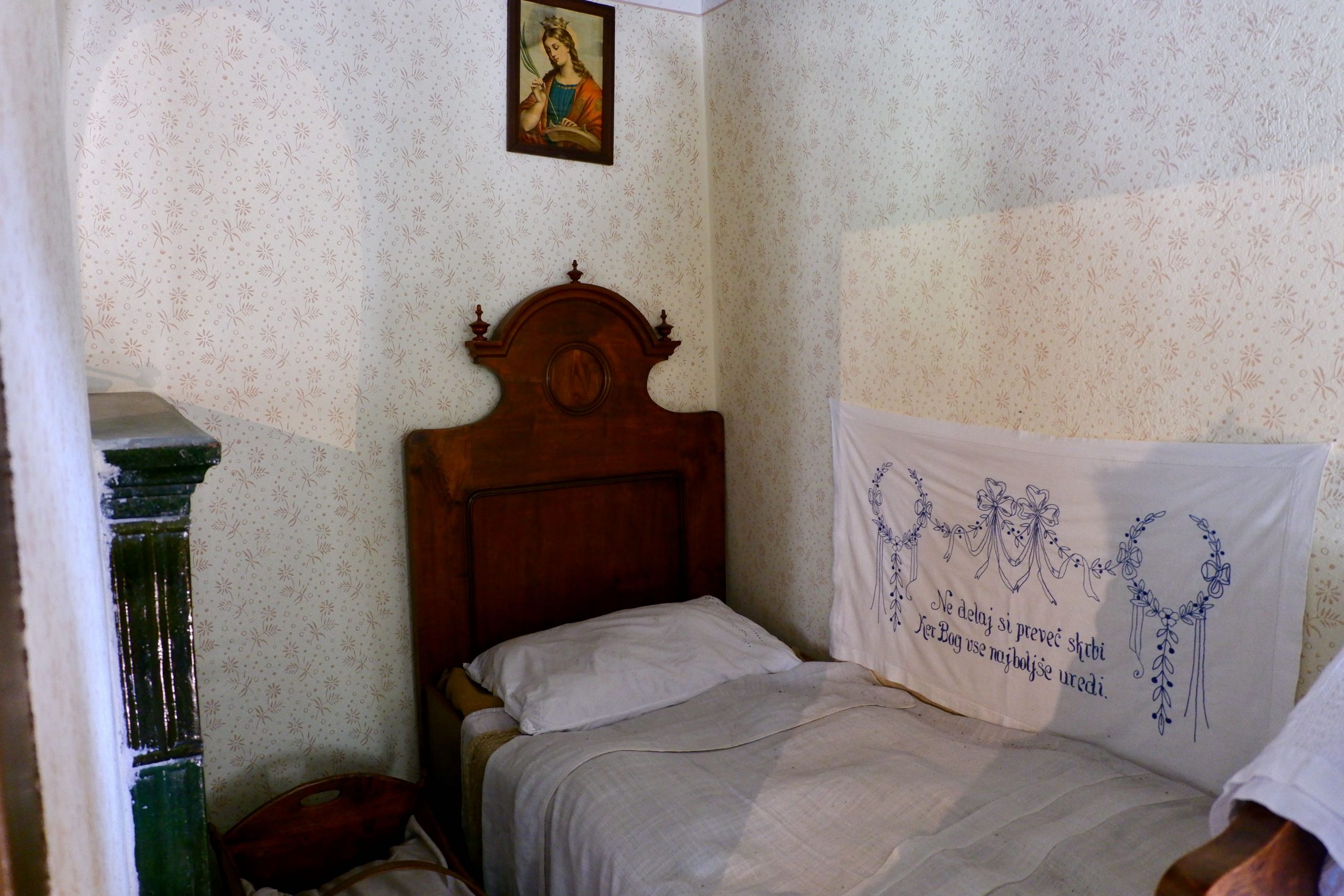 3
3
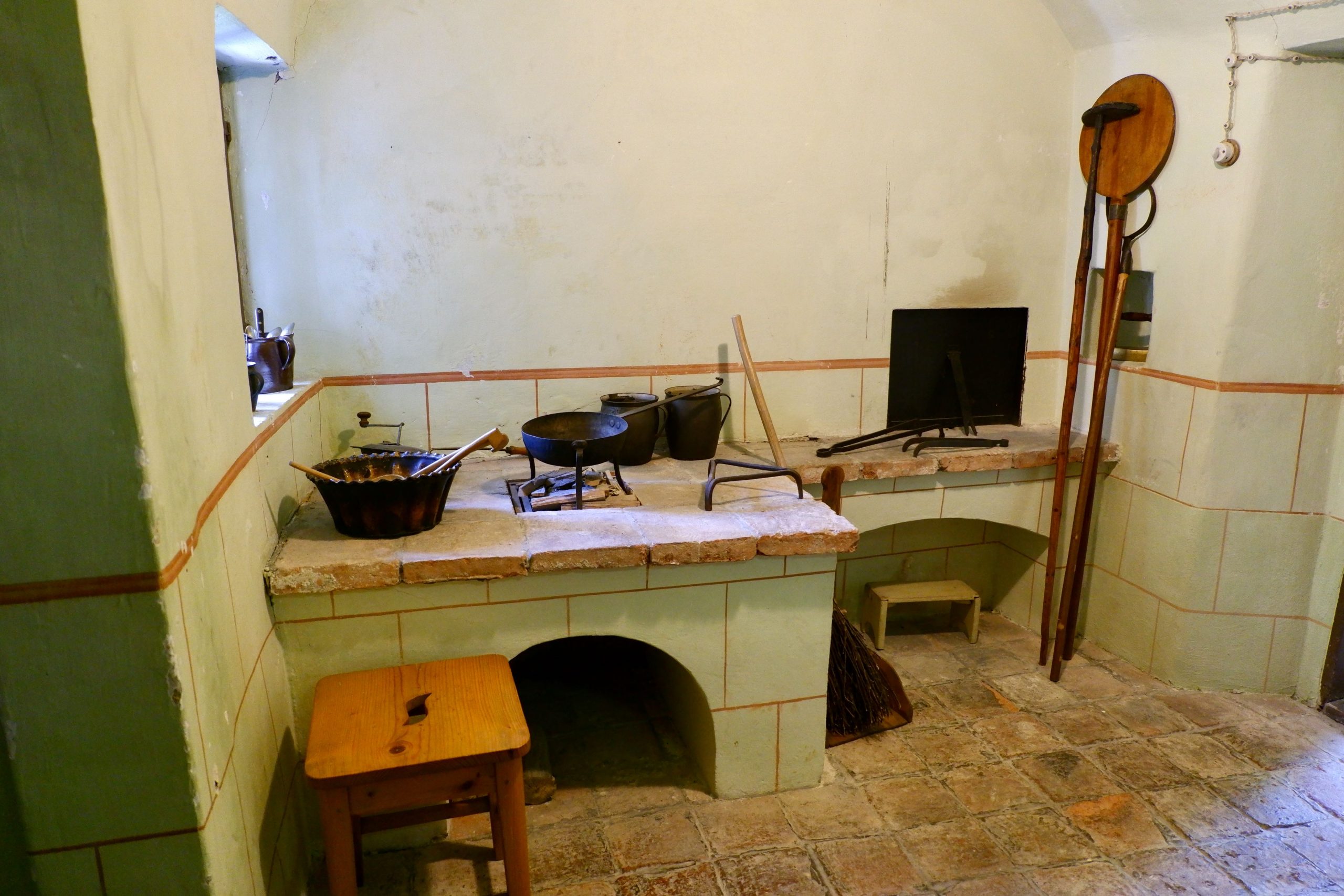 4
4
The museum was actually closed, but at the large city museum they still wanted to make a visit possible for us and sent a young girl along. She was a student on holiday, working at the museum. We were the first guests to have a tour with her, and she did a really good job. I would have been far too shy to do something like that at her age and found her very brave.
The people here had a very short commute – one of the mines was right next door and is now abandoned.
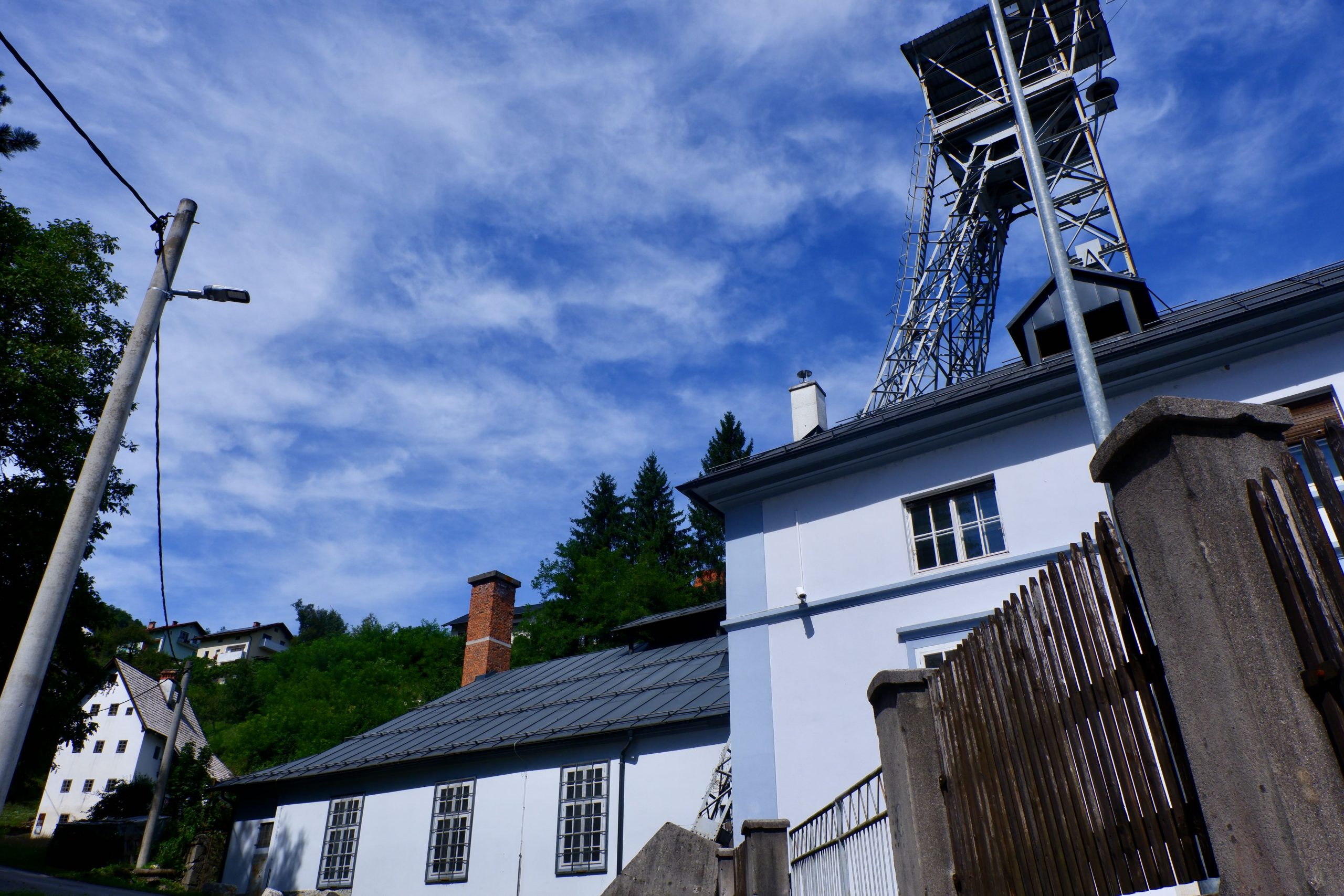 5
5
Afterwards, we went to the museum. It was housed in Gewerkenegg Castle and was huge. This castle was not originally built as a residence for royalty or primarily for defense (though it served those purposes too) but actually as an administrative center for the mines and as a storage facility for mercury and food.
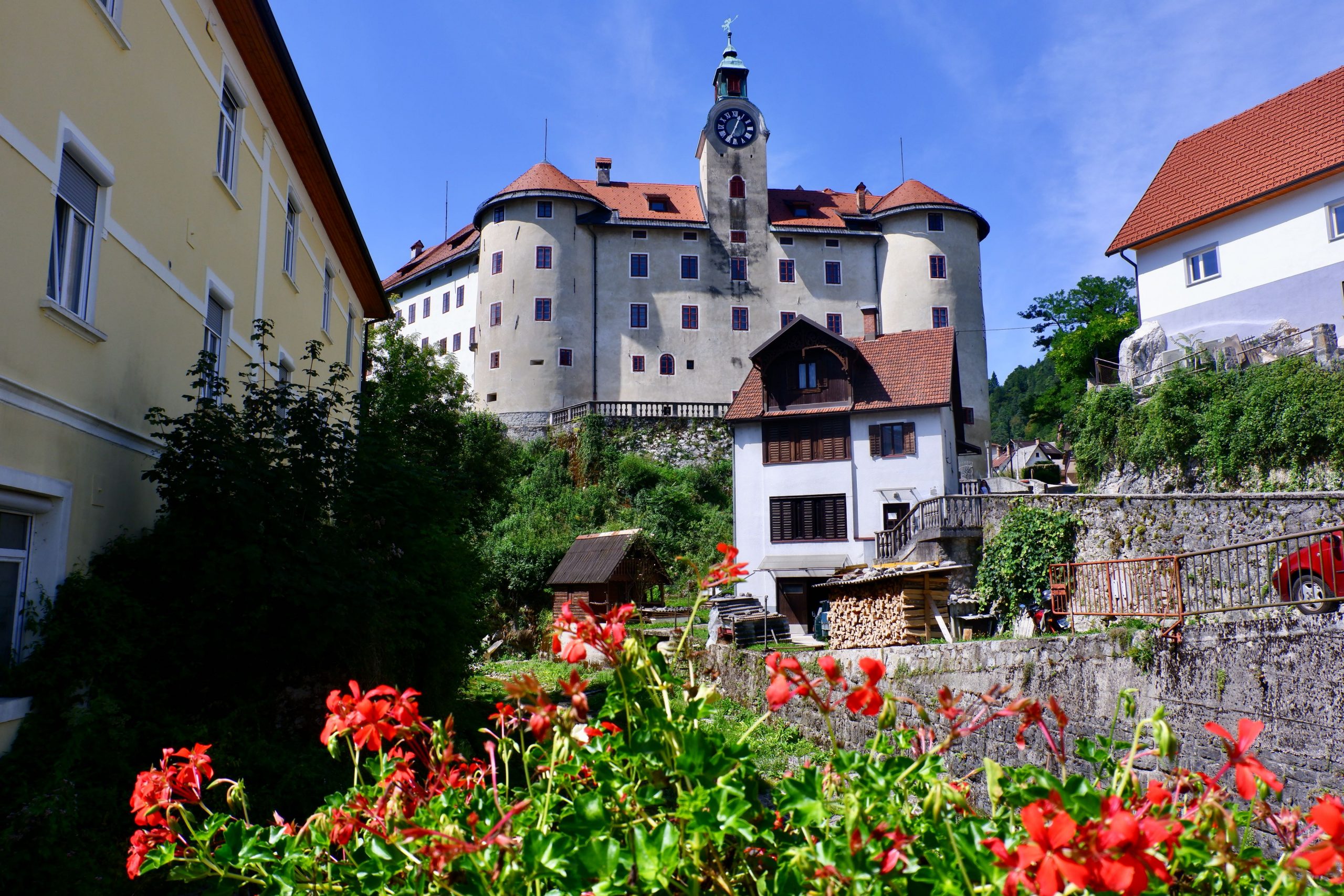 6
6
The walls in the courtyard were nicely decorated:
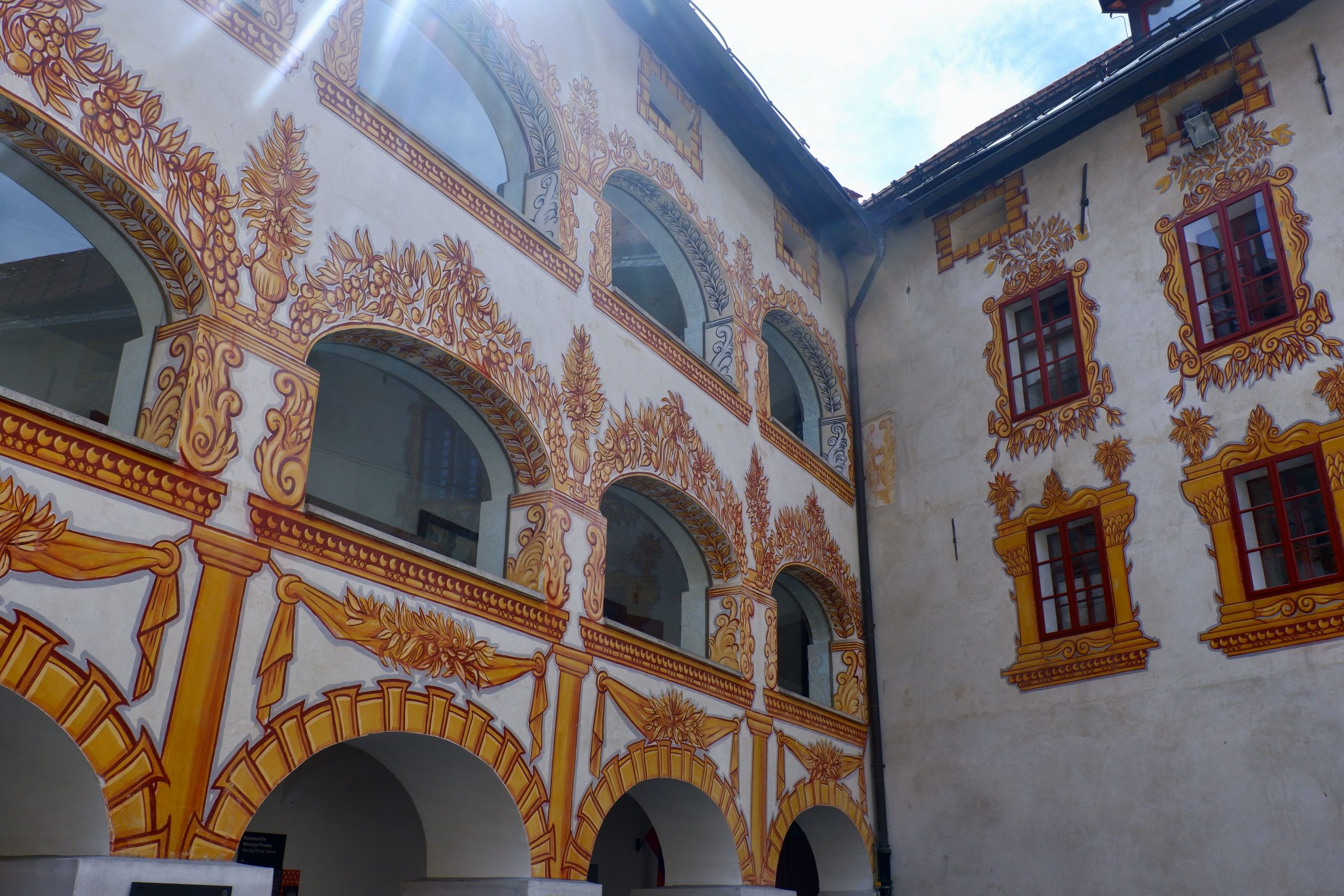 7
7
This city museum is so large that it would take several days to take it all in. They were able to collect a great deal and present it in a very interesting way, but it was simply too much, especially considering the long history—from the discovery of mercury to the closure of the mines in the 1990s.
I made a photo note—showing how Slovenian conscripted soldiers, who were supposed to fight for the Italian army, protested against the new rule by having themselves photographed with macaroni decorations on their bodies.
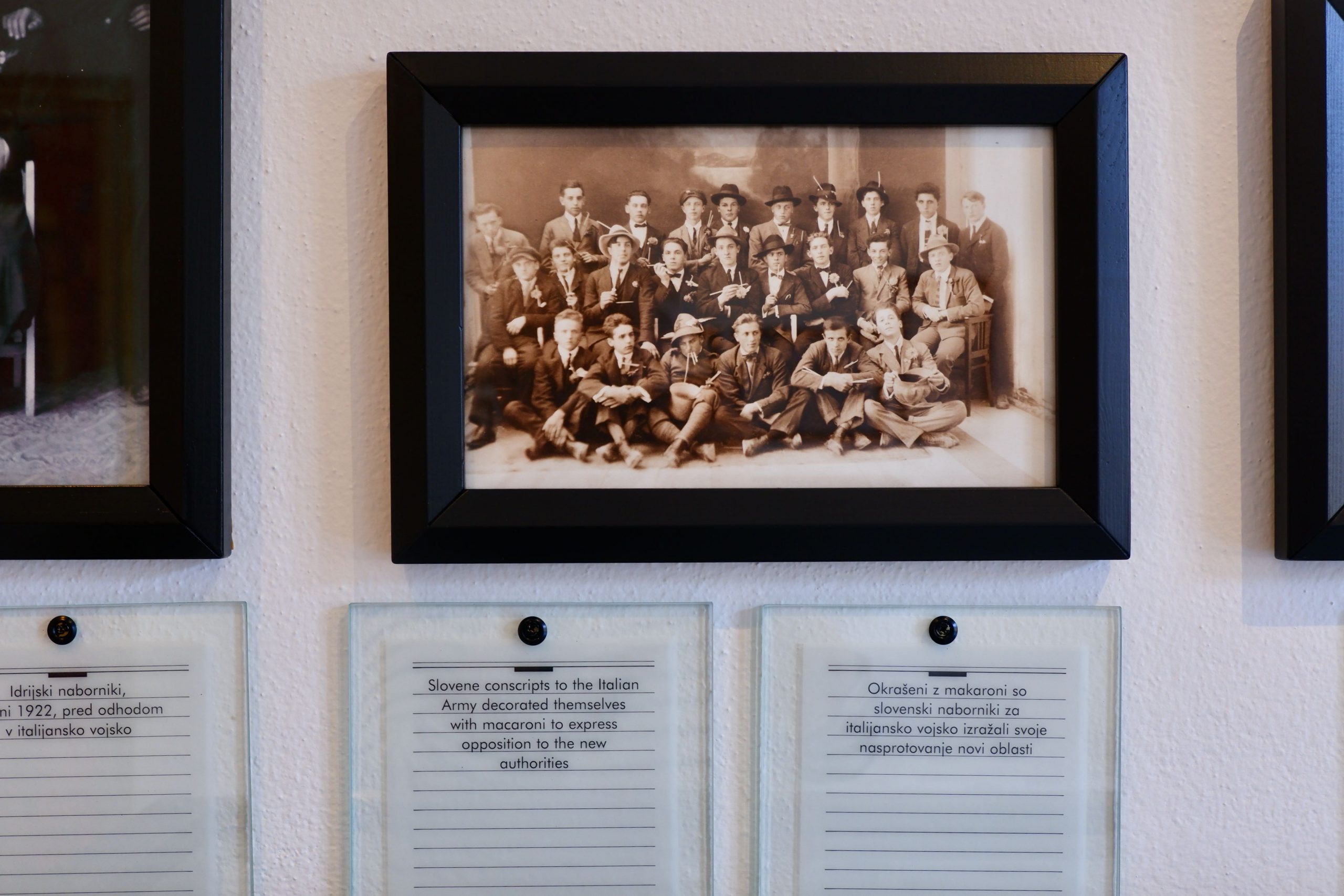 photo-note
photo-note
The museum also had a section dedicated to bobbin lace, for which this region is also famous. It’s amazing the intricate patterns that can be created through this technique. Bobbin lace has been practiced here for about 300 years, and there is even a school for it.
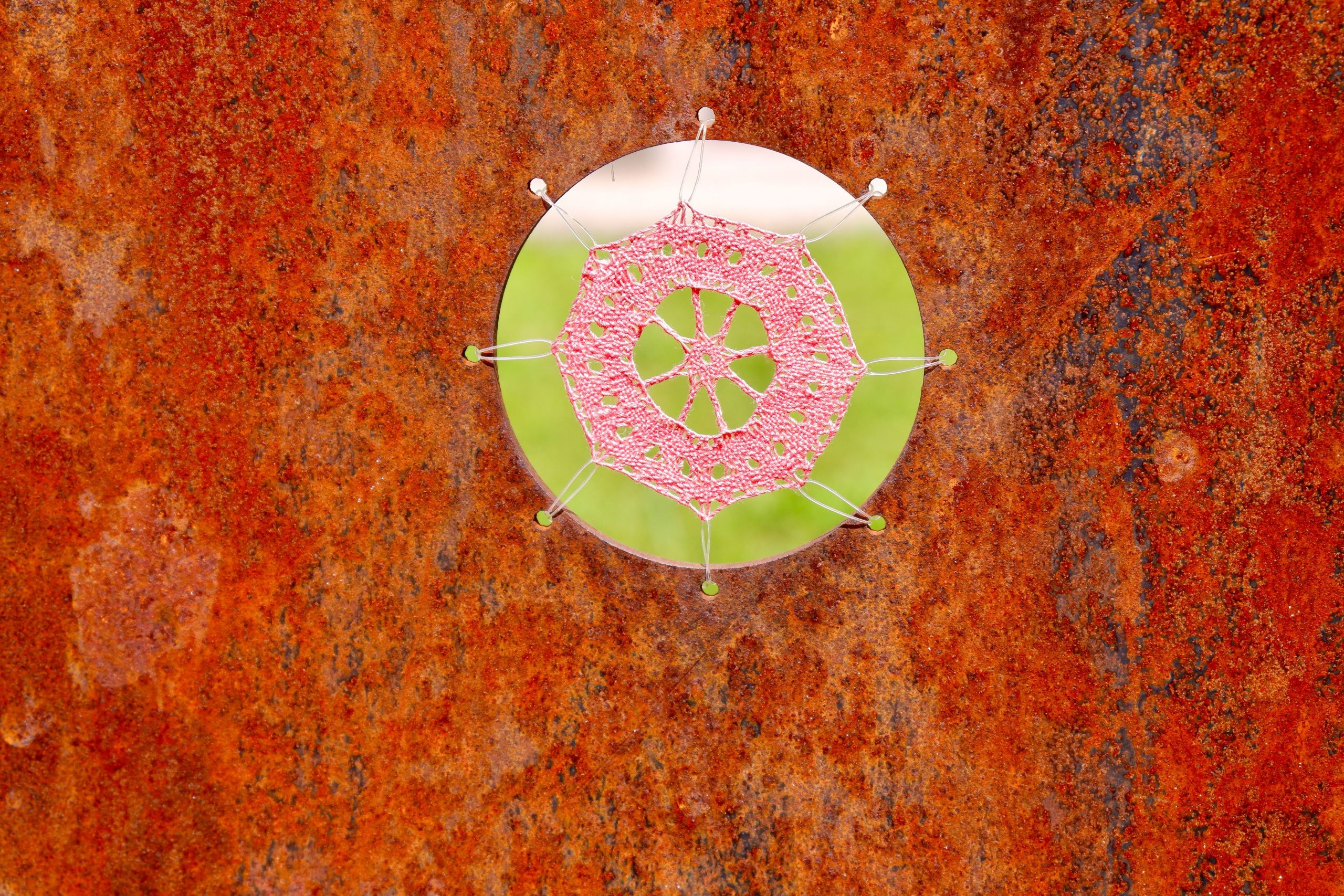 Mini-bobbin-lace
Mini-bobbin-lace
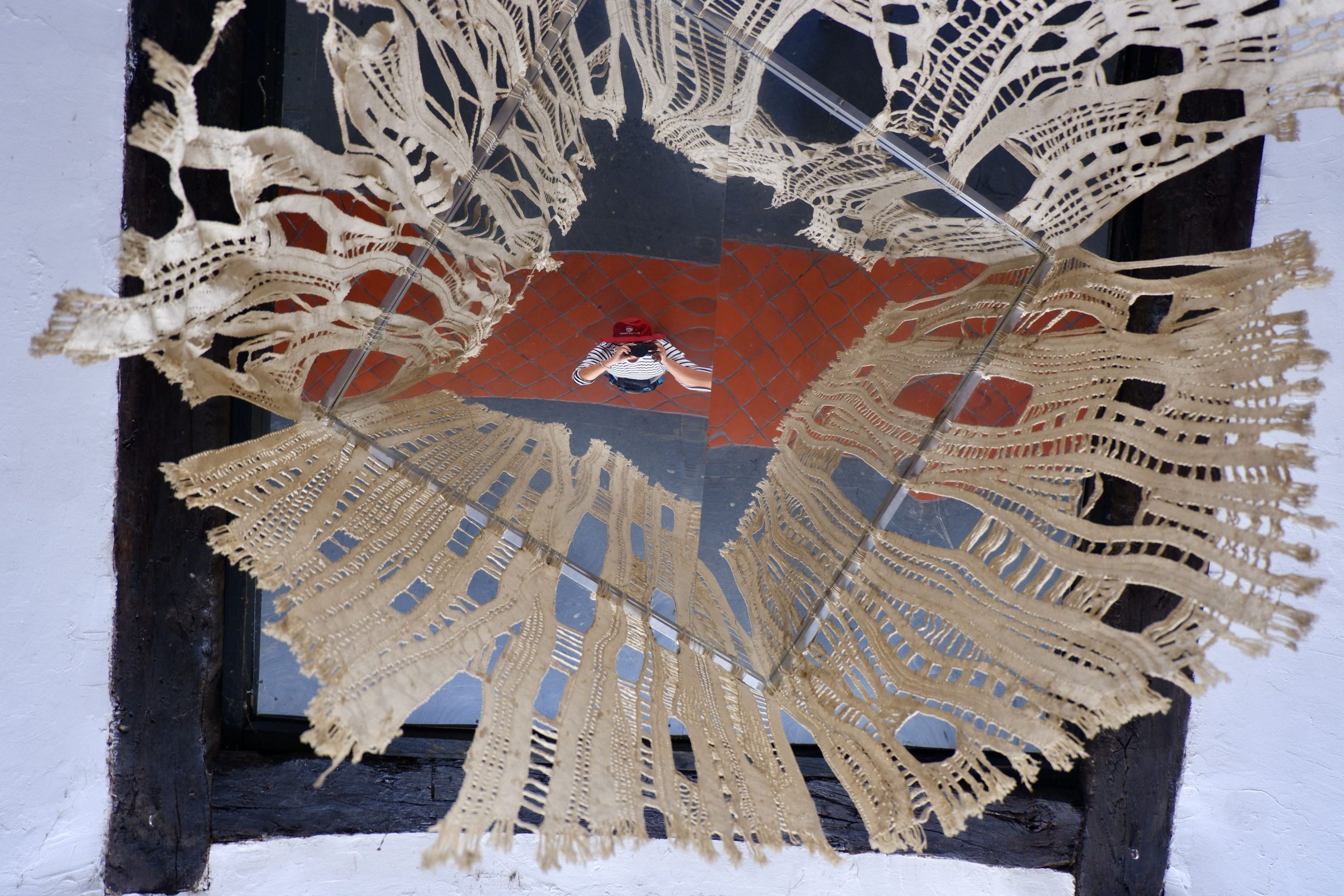 me under fake bobbin lace
me under fake bobbin lace
The area was therefore quite prosperous, but with mercury mining coming to an end in the early 1990s, all the mines were closed. However, people here were resourceful, and new companies were able to employ and continue to support the local workforce.
Few more pics from Idrija:
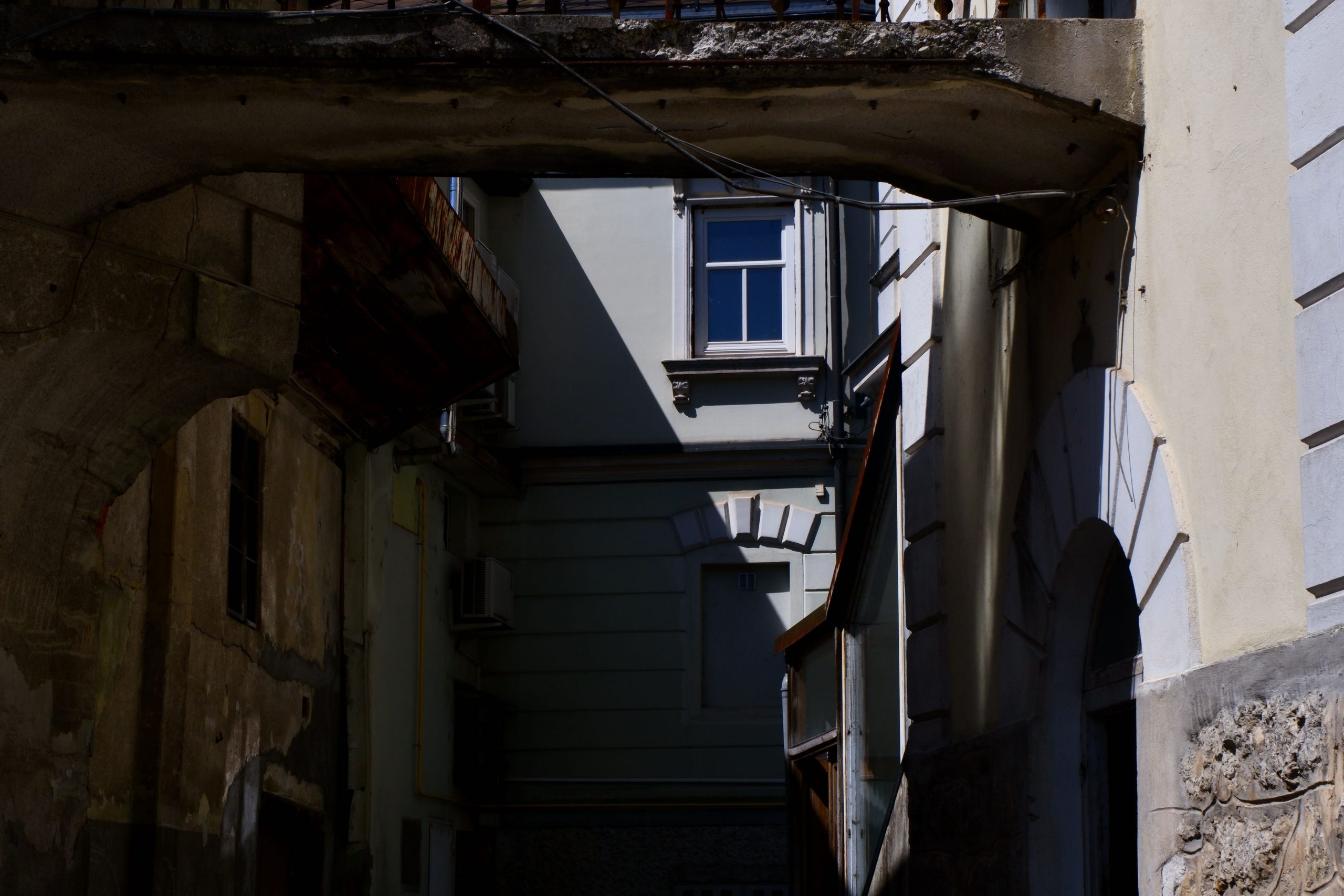 8
8
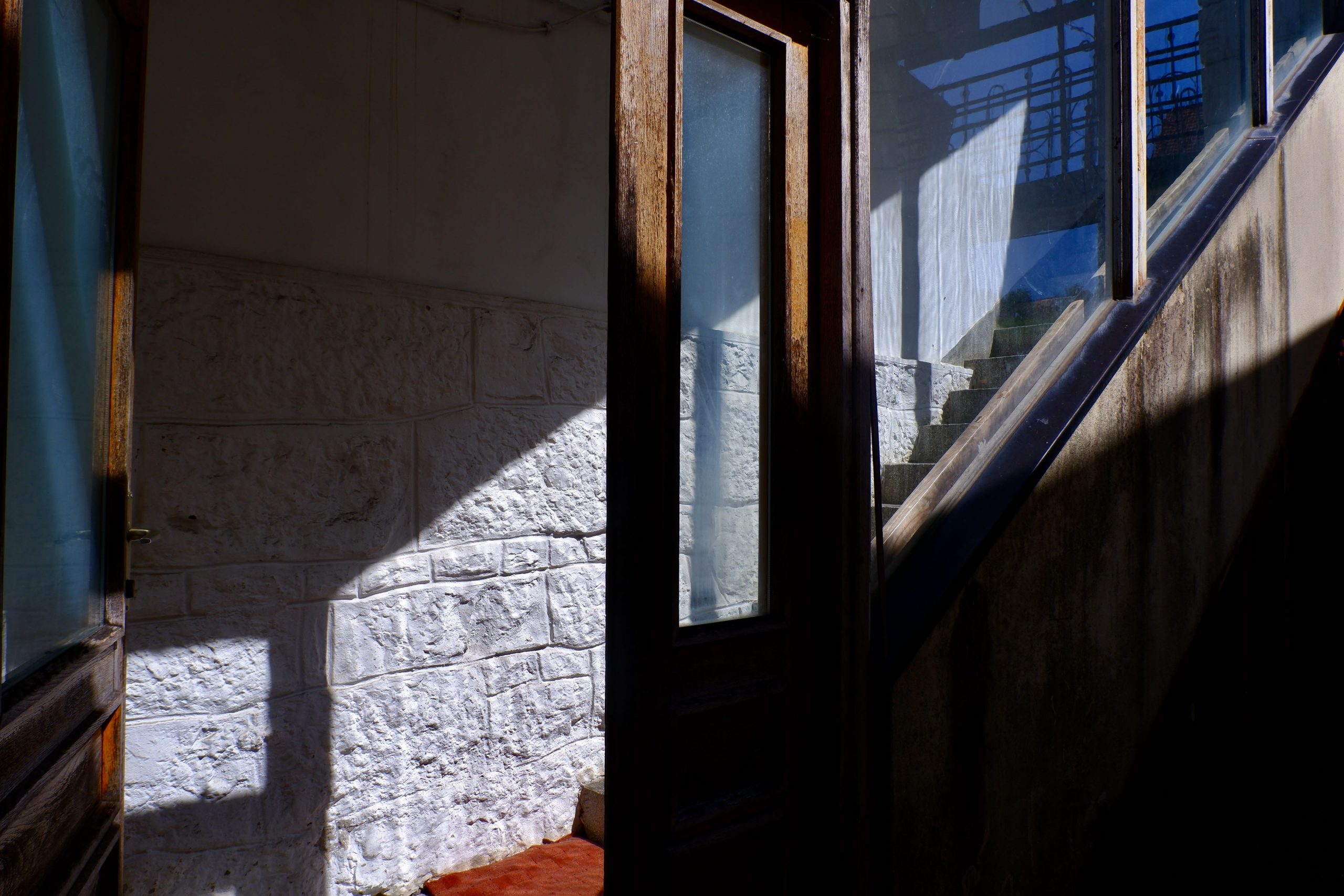 9
9
It weren’t that many pics.
My conclusion for the day was that I did indeed learn a lot, but I also became much more aware of my enormous gaps in knowledge.
We bought dinner at Spar (I always find it strange to see so many familiar stores like Lidl, Spar, Hofer/Aldi, Obi, and DM in a country where the language on the signs looks so foreign) and then drove back along the thrilling road. You really have to be extremely careful, as the locals have a lot of trust that they won’t collide with oncoming traffic.
And then we took a short walk through little Jazne and wondered how people live here. As you can see in the pictures to some extent, Slovenia has an incredible number of small vegetable gardens. In the small plot below, potatoes had been harvested. There were lots of tomatoes, pumpkins, beans, and all sorts of other things growing. And that church – it rang its bells at odd times (certainly not on the hour).
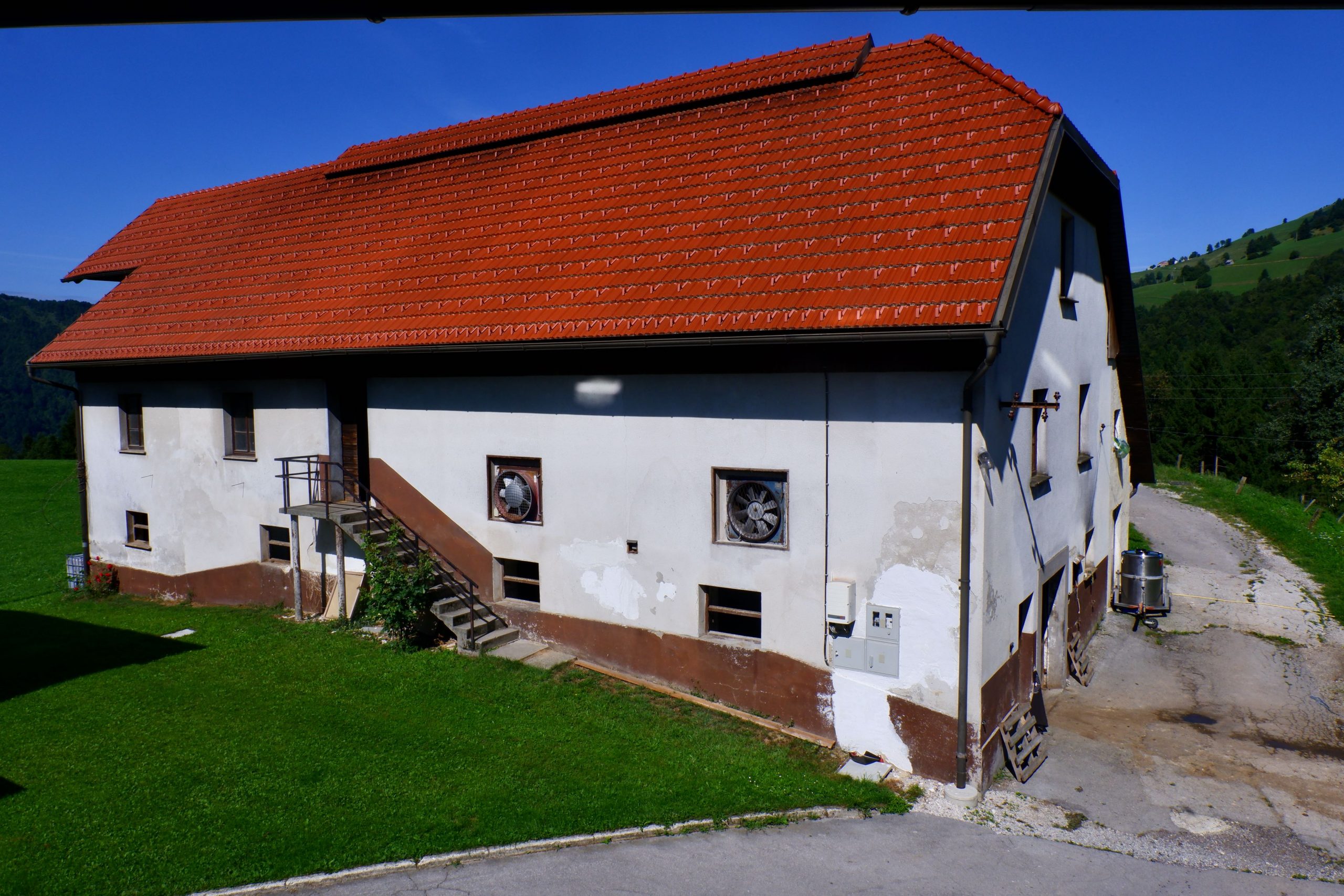 10
10
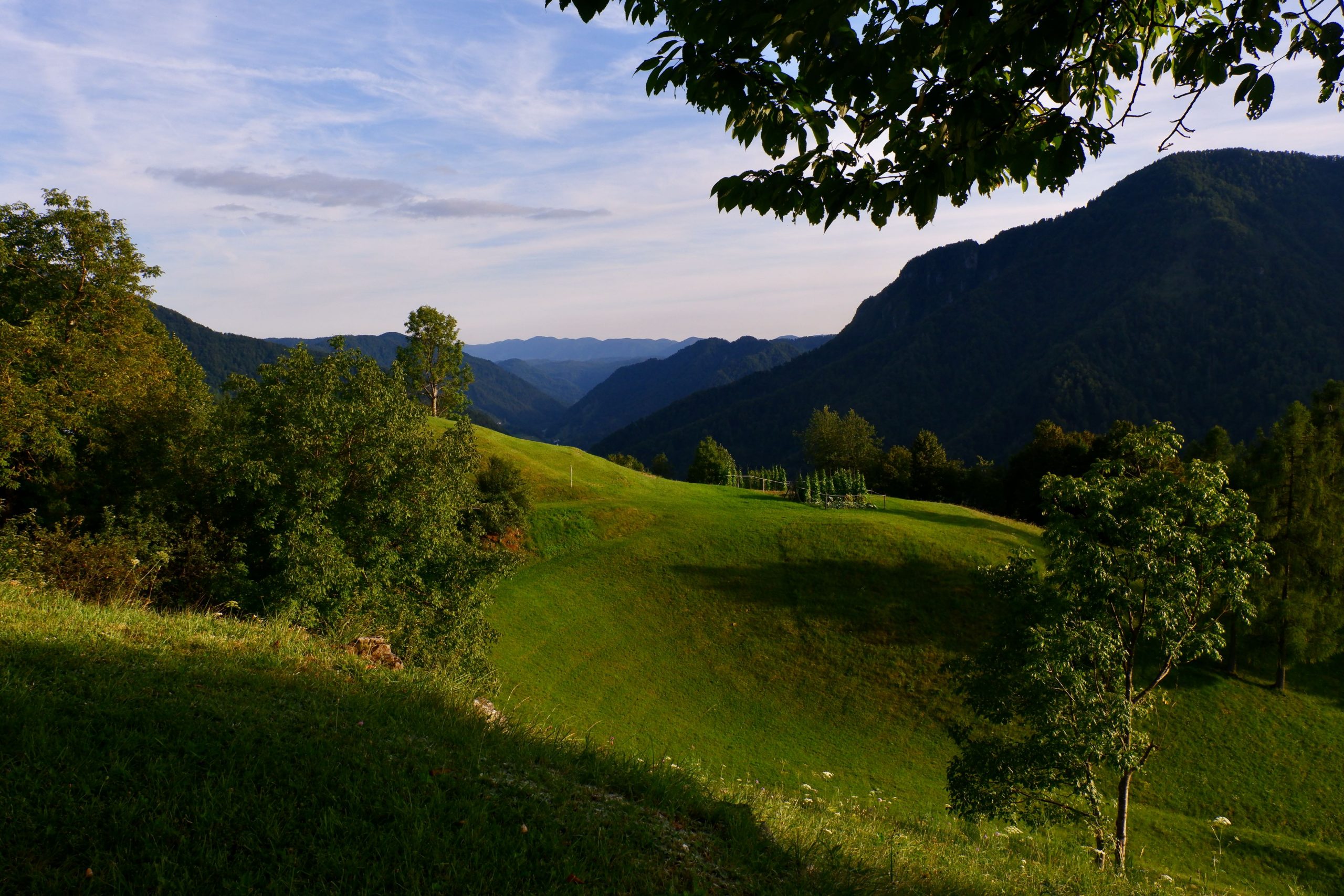 11
11
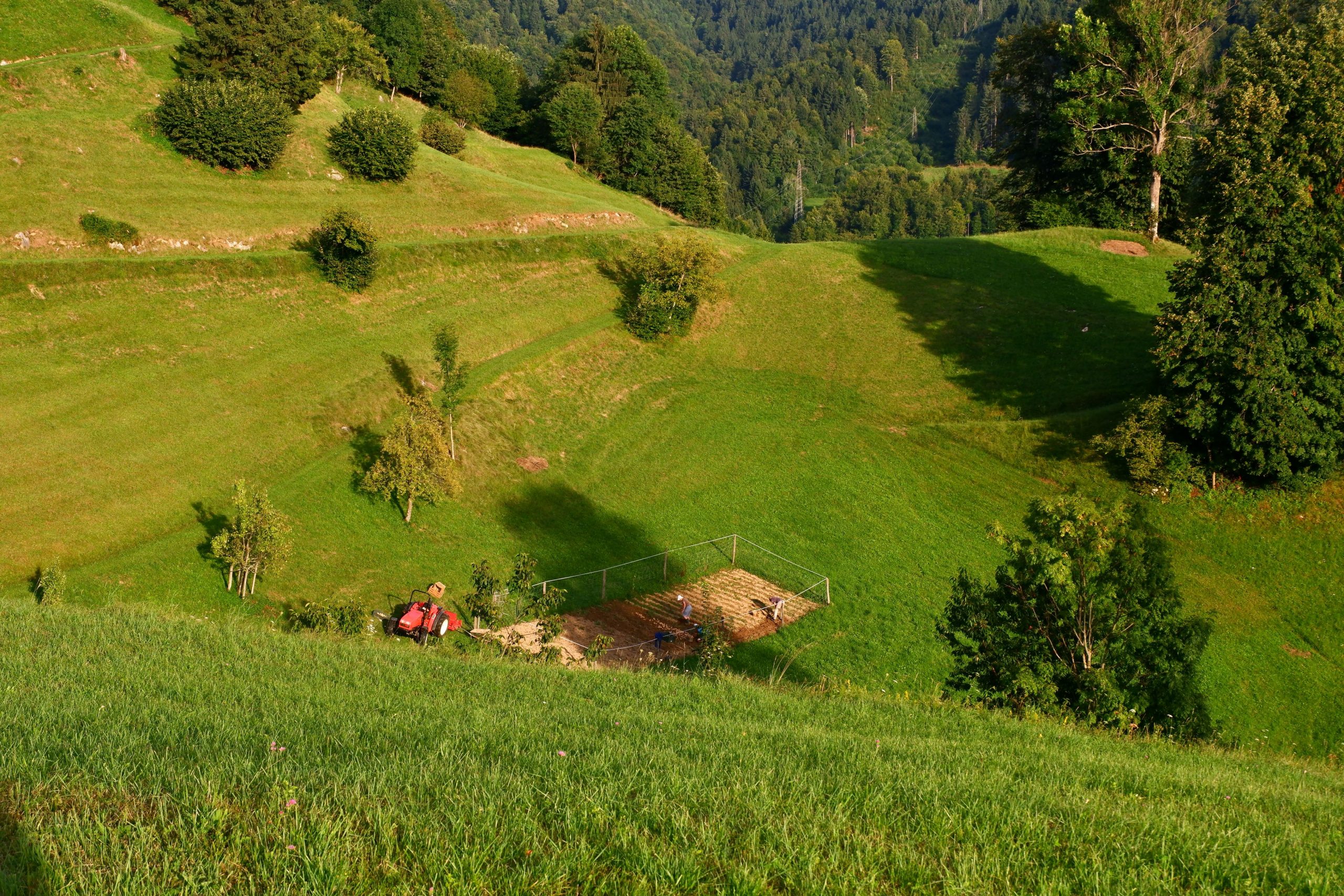 12 (potatoe harvest)
12 (potatoe harvest)
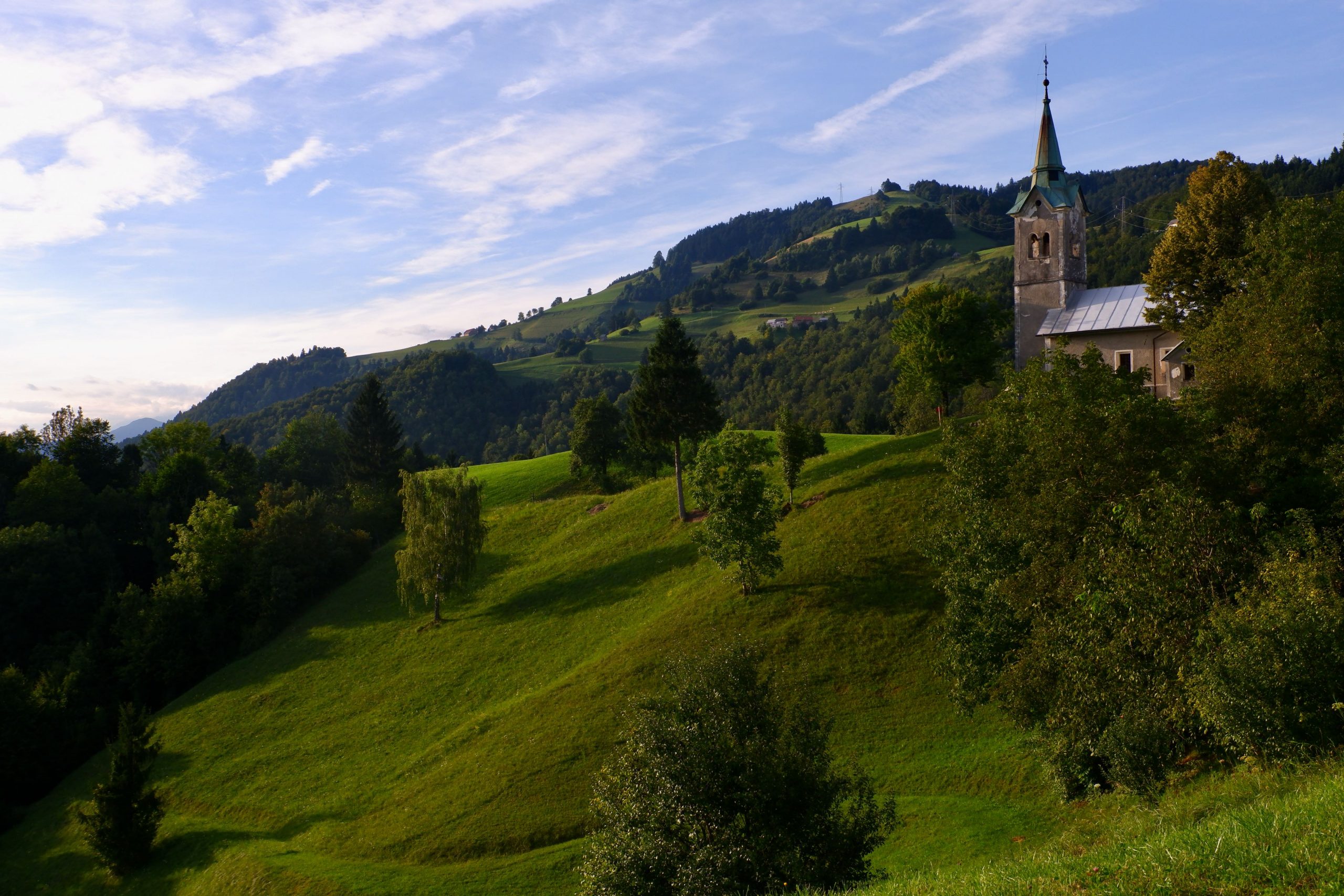 13
13
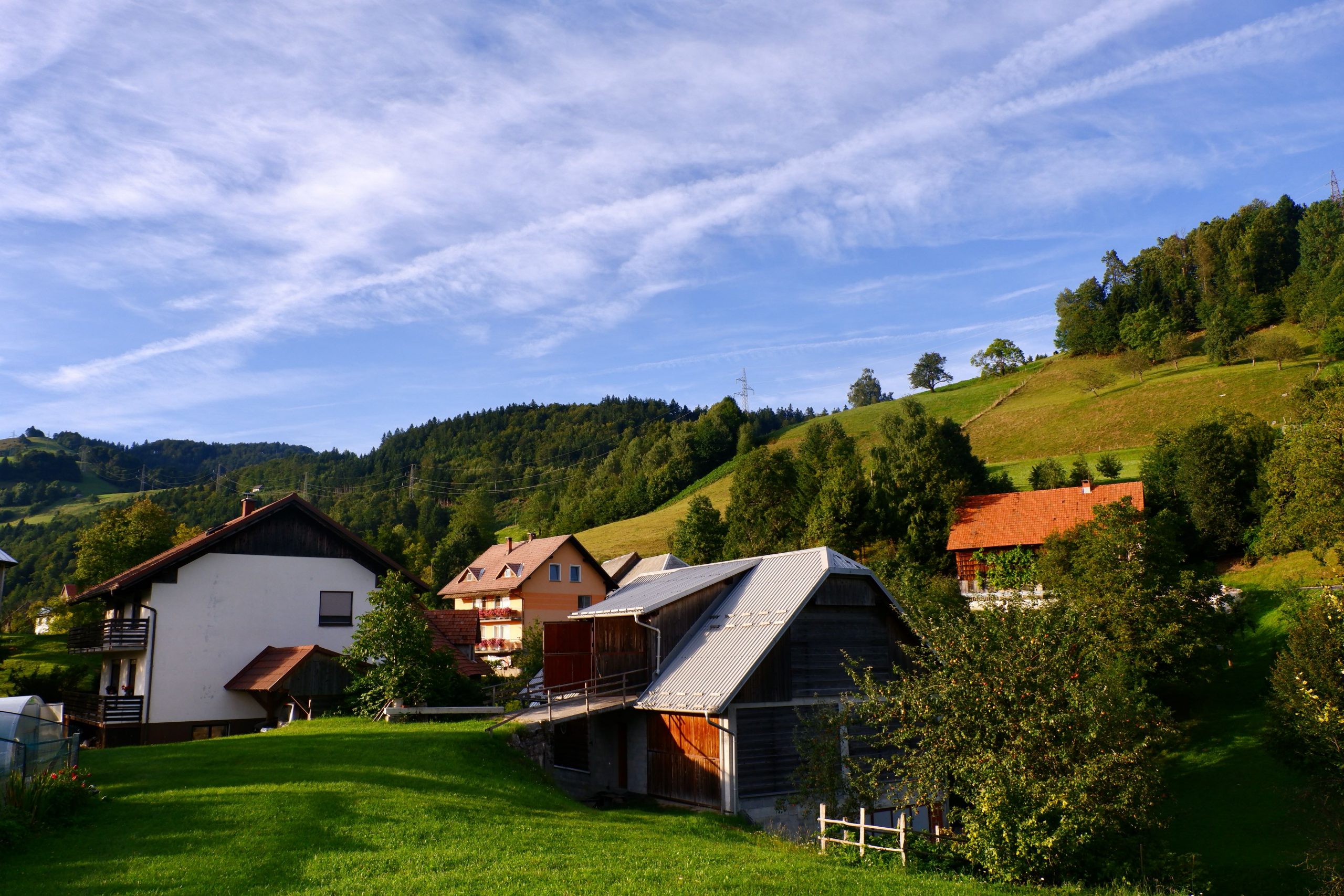 14
14
In any case, we had gained a small impression of rural Slovenia and planned to expand on it the next day by visiting another village.
